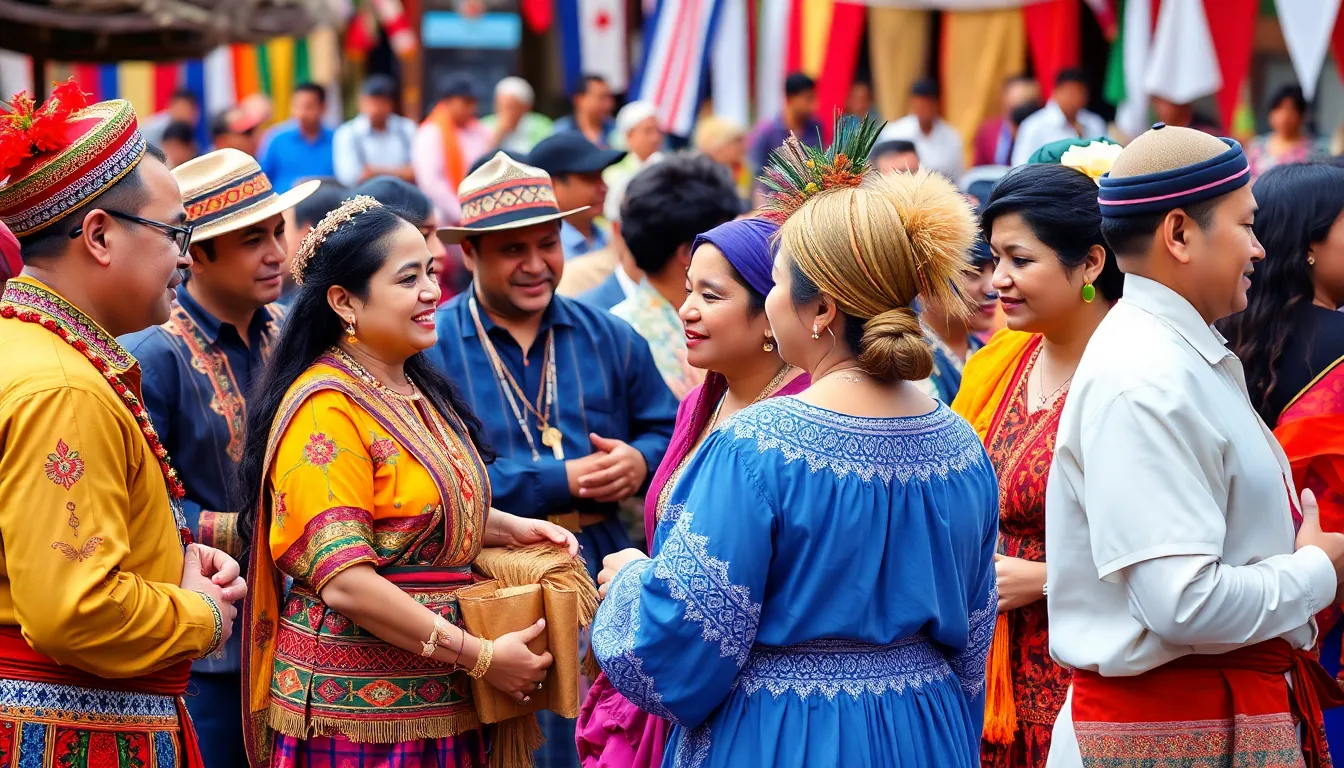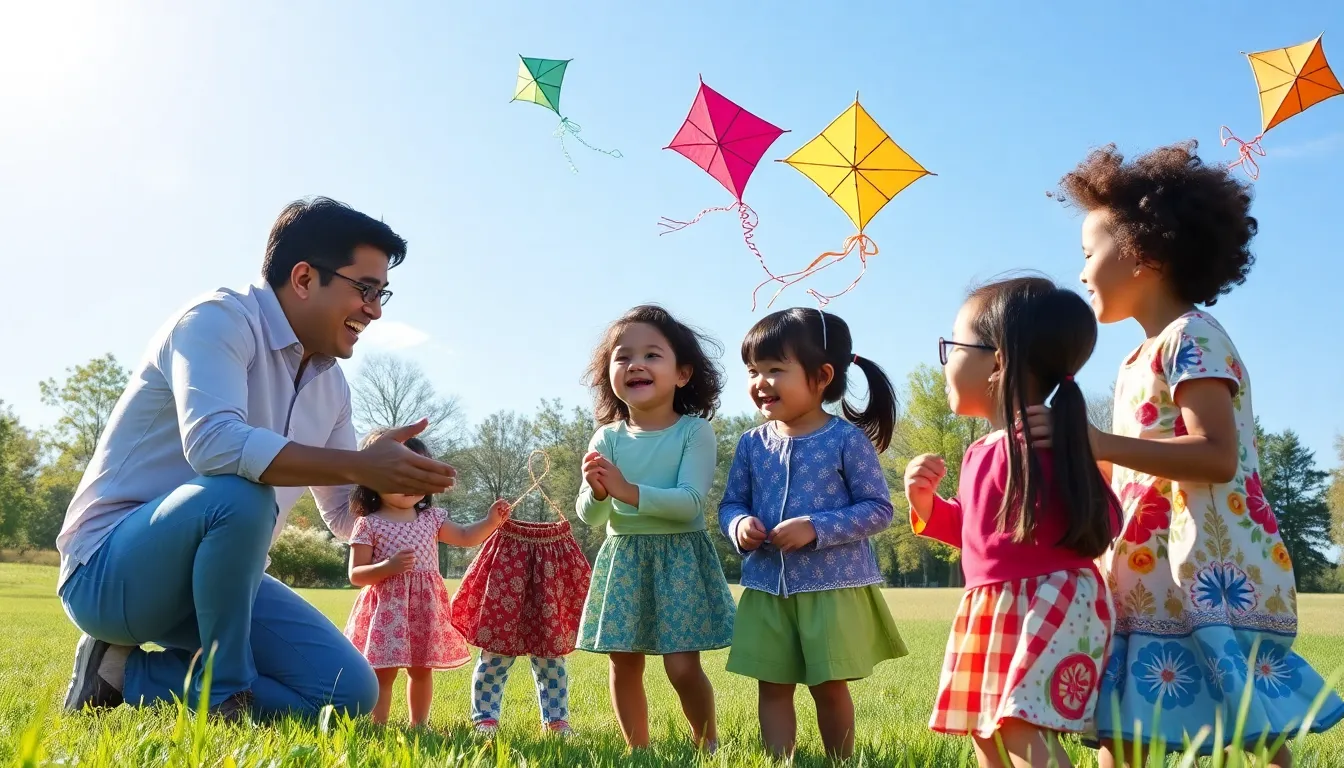Cultural transmission theory is like the ultimate game of telephone, but instead of whispering secrets, it’s about passing down beliefs, values, and practices through generations. Imagine a world where traditions, languages, and even quirks are shared without a single text message or social media post. This fascinating concept explains how cultures evolve and adapt, often with a twist that makes them uniquely their own.
In a society that’s constantly changing, understanding cultural transmission can feel like trying to catch smoke with your bare hands. Yet, it’s crucial for grasping how societies shape their identities. From grandma’s secret recipe to the latest dance craze, this theory reveals the invisible threads connecting us all. So, buckle up and dive into the intriguing world of cultural transmission, where every story has a twist and every tradition has a tale to tell.
Table of Contents
ToggleOverview of Cultural Transmission Theory
Cultural transmission theory investigates how beliefs, values, and practices are passed across generations. This process shapes he societies and influences their identities through shared traditions and languages.
Definition of Cultural Transmission
Cultural transmission refers to the methods by which cultural information is conveyed from one generation to another. These methods include direct teaching, imitation, and social learning. Children observe their parents and communities, absorbing customs and norms. Diverse cultures display varying rates and styles of transmission. Examples include storytelling, rituals, and language use, each playing a crucial role in shaping cultural identity.
Importance of Cultural Transmission
Cultural transmission significantly impacts societal evolution and continuity. It creates a sense of belonging within communities by preserving traditions and shared histories. Societal norms, including morals and customs, derive from this process. Additionally, it fosters diversity by allowing distinct traditions to coexist. Understanding cultural transmission helps highlight connections among societies, emphasizing shared values and promoting intercultural dialogue. Its significance lies in how it enables adaptation, ensuring cultures thrive while evolving over time.
Key Concepts in Cultural Transmission Theory

Cultural transmission theory encompasses several essential ideas regarding how cultures propagate and evolve. Understanding these concepts reveals the intricate processes shaping identities and communities.
Types of Cultural Transmission
Cultural transmission occurs through two principal types:vertical and horizontal. Vertical transmission involves passing cultural information from one generation to another, such as parents teaching children traditions and values. Horizontal transmission sometimes happens between individuals of the same generation, where peers share knowledge and customs. Additionally, oblique transmission refers to influence from broader societal groups or institutions, like schools or media, shaping cultural norms across multiple generations. Each of these types contributes to the rich tapestry of culture, ensuring that practices and beliefs remain dynamic.
Mechanisms of Transmission
Several mechanisms drive the process of cultural transmission. Direct teaching plays a crucial role, where explicit instruction conveys specific values or customs. Imitation allows individuals, particularly children, to learn by observing others, absorbing social behaviors and traditions. Social learning occurs through interactions within communities, reinforcing cultural norms. These mechanisms create robust pathways for cultural information, fostering continuity and adaptation over time. Generational exchanges and communal experiences reinforce identity, enabling individuals to connect deeply with their cultural heritage.
Historical Context of Cultural Transmission Theory
Cultural transmission theory has deep historical roots, tracing back to early anthropological studies. Scholars aimed to understand how cultural knowledge and behaviors spread among individuals.
Origins and Evolution
The origins of cultural transmission theory stem from the need to explain societal development. In the 19th century, early thinkers like Edward Burnett Tylor emphasized the role of social learning in cultural evolution. Cultural evolution models suggested that knowledge transfer contributed to societal complexity. Concepts of adaptation and change also played pivotal roles in shaping cultural narratives. Over time, researchers expanded the theory through empirical studies, linking it to genetics and cognitive processes. Anthropological methods helped establish connections between cultural practices and human behavior, laying the groundwork for contemporary discussions.
Influential Theorists
Several influential theorists shaped cultural transmission theory’s development. Albert Bandura introduced social learning theory, emphasizing observation and imitation in learning behaviors. His work highlighted how individuals absorb culture through interactions within their environment. Another key figure, Lev Vygotsky, focused on the importance of social context in learning. Vygotsky’s ideas reinforced the notion that culture significantly influences cognitive development. Pierre Bourdieu further contributed with concepts such as habitus, illustrating how culture becomes ingrained in social practices. Each theorist provided valuable insights, enriching the understanding of how cultural transmission functions and evolves within societies.
Applications of Cultural Transmission Theory
Cultural transmission theory applies across various fields, illuminating how cultures influence individuals and groups alike.
In Psychology
Cultural transmission theory provides insight into human behavior by emphasizing the role of social learning. It examines how individuals adopt behaviors and values through observation and imitation. Psychologists often study this process to understand how traditions shape identity, beliefs, and emotional responses. For example, children often emulate parents or peers, internalizing societal norms. Studies reveal that cultural contexts significantly influence cognitive development, affecting learning styles and motivation. In therapeutic settings, understanding a client’s cultural background aids in tailoring effective interventions that resonate with their values.
In Anthropology
Cultural transmission theory serves as a cornerstone in anthropology, offering frameworks for examining cultural practices. Anthropologists explore how rituals, customs, and languages evolve over time through various transmission mechanisms. Researchers utilize this theory to analyze cultural contact and exchange between different groups. Fieldwork often reveals the intricate ways social structures impact cultural adaptation. For instance, the transmission of agricultural techniques influences socio-economic development within communities. Additionally, anthropological studies highlight the importance of preserving cultural heritage, emphasizing how knowledge is sustained and disseminated through generations.
Critiques and Challenges
Cultural transmission theory has faced various critiques and challenges over time. Critics often point out certain limitations and seek alternative frameworks to explain cultural evolution.
Limitations of the Theory
The theory’s focus on transmission methods may overlook the active roles individuals play in shaping culture. Cultural practices might not solely result from imitation or direct teaching. Additionally, the linear nature of information transfer could misrepresent the complexity involved in cultural exchanges. Contextual factors, such as socio-economic conditions and historical events, influence how cultures adapt and transform. Furthermore, it often underestimates the potential for cultural blending and innovation that occurs through interaction among diverse groups.
Alternative Theories
Several alternative theories provide different perspectives on cultural evolution. Social constructionism emphasizes the role of social interactions in shaping meanings and beliefs. This approach highlights how individuals collaboratively create cultural realities. Another perspective, cultural materialism, focuses on the material conditions and economic factors that drive cultural practices. It connects culture with environmental contexts, suggesting that resources greatly influence societal structures and norms. Methodological approaches such as systems theory also offer insights by examining cultural dynamics as interdependent systems rather than isolated processes.
Cultural transmission theory offers a compelling lens through which to understand the intricate ways cultures evolve and adapt. By examining the mechanisms of vertical, horizontal, and oblique transmission, one can appreciate how traditions and values are not merely inherited but actively shaped by social interactions.
The contributions of key theorists highlight the complexity of cultural exchange and the active role individuals play in this process. While critiques of the theory underscore its limitations, they also open avenues for deeper exploration into the multifaceted nature of culture.
Ultimately, cultural transmission fosters a rich tapestry of shared histories and identities, underscoring the importance of preserving cultural heritage in an increasingly interconnected world.




